outline
at previous blog, we installed Laradock by Ansible. to develop Laravel, we will install and create Laravel project.
this blog is the series of below list. we recommend to read below list for understanding.
configure php and composer
if you installed php and composer in local machine(host system), it’s better to skip this section. to create Laravel project, we’ll install php and composer on virtual machine(guest system).
add php and composer installation role to Ansible Playbook folder we’ve made until now.
|-- ansible
| |-- init
| | |-- tasks
| | | |-- main.yml
| |-- docker
| | |-- tasks
| | | |-- main.yml
| |-- laradock
| | |-- tasks
| | | |-- main.yml
| |-- php
| | |-- tasks
| | | |-- main.yml
| |-- playbook.yml
|-- Vagrantfile
add new php role to Ansible Playbook file.
---
- hosts: localhost
connection: local
roles:
- init
- docker
- laradock
- php
modify Ansible Playbook role file php/tasks/main.yml like below.
---
- name: Add php7.2 repo
apt_repository:
repo: 'ppa:ondrej/php'
tags: php
- name: Install php
become: true
apt:
pkg:
- php7.2
- php7.2-mbstring
- php7.2-xml
state: present
update_cache: yes
tags: php
- name: check composer
stat: path=/usr/local/bin/composer
register: composer_bin
tags: php
- block:
- name: download composer
get_url:
url: https://getcomposer.org/installer
dest: /tmp/installer
- name: install composer
shell: cat /tmp/installer | php -- --install-dir=/usr/local/bin
- name: rename composer.phar to composer
shell: mv /usr/local/bin/composer.phar /usr/local/bin/composer
- name: make composer executable
file:
path: /usr/local/bin/composer
mode: a+x
state: file
when: not composer_bin.stat.exists
tags: php
- name: stop apache2
become: true
shell: update-rc.d apache2 disable
tags: php
let’s see task in role one by one.
- name: Add php7.2 repo
apt_repository:
repo: 'ppa:ondrej/php'
tags: php
to install php 7.2, add php 7.2 repository to apt.
- name: Install php
become: true
apt:
pkg:
- php7.2
- php7.2-mbstring
- php7.2-xml
state: present
update_cache: yes
tags: php
install php 7.2 and php modules for installing and executing Laravel.
- name: check composer
stat: path=/usr/local/bin/composer
register: composer_bin
tags: php
before installing composer, check composer file exists and store the result to composer bin variable.
- block:
...
when: not composer_bin.stat.exists
tags: php
enclose multiple task in a block. also, also, this block is run only when composer file does not exist by checking composer_binvariable.
let’s see the block one by one.
- name: download composer
get_url:
url: https://getcomposer.org/installer
dest: /tmp/installer
download composer install script to /tmp/installer file.
- name: install composer
shell: cat /tmp/installer | php -- --install-dir=/usr/local/bin
install composer to /usr/local/bin folder by using composer install script.
- name: rename composer.phar to composer
shell: mv /usr/local/bin/composer.phar /usr/local/bin/composer
change composer.phar file name to composer.
- name: make composer executable
file:
path: /usr/local/bin/composer
mode: a+x
state: file
change the permission so that composer is executable.
- name: stop apache2
become: true
shell: update-rc.d apache2 disable
tags: php
after installing php, we got a problem. when virtual machine(guest system) is restarted, apache2 is started and Docker that uses same port is not executed. so we configure not to start apache2 server when virtual machine(guest system) is restarted.
install php and composer
execute Ansible Playbook role we made above to install php and composer. we added php tag to role for only executing specific role. execute below command to run only role tagged php.
#vagrant ssh
sudo ansible-playbook /vagrant/ansible/playbook.yml --tags 'php'
execute below command to check php and composer are installed well.
#vagrant ssh
php --version
composer --version
create Laravel project
execute below command to create Laravel project. if you have your own Laravel project, you can skip below command.
#vagrant ssh
cd /vagrant
composer create-project laravel/laravel app
configure Laravel project
at previous blog post(Ansible&Laradock), we’ve made Laradock installation role like below.
...
- name: change project folder
replace:
path: /vagrant/lib/laradock/.env
regexp: 'APP_CODE_PATH_HOST=*.*'
replace: 'APP_CODE_PATH_HOST=/vagrant/app'
tags:
- replace
...
we’ve set to sync /vagrant/app folder to Laradock workspace Docker when created. so we made new project on /app folder in /vagrant folder. if you have existing Laravel project, you should copy to /vagrant/app or you should modify above part in Laradock role.
check Laravel project
now, access localhost again. you can see basic Laravel screen.

if Laravel is not configured well, you can see 500 error screen like below.
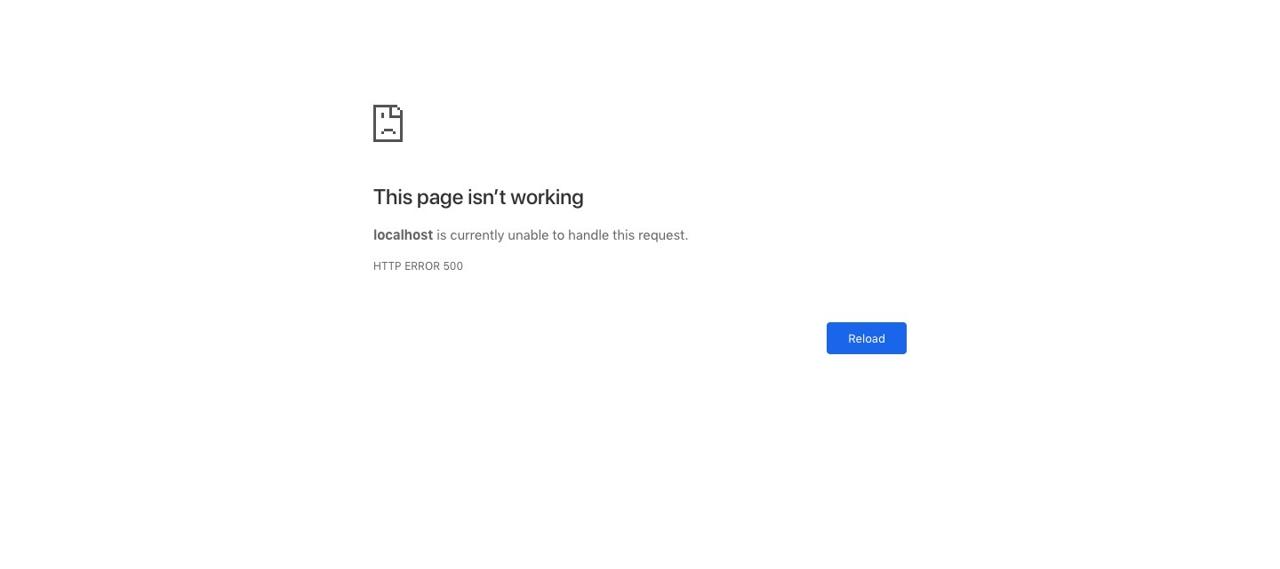
check if missed settings exist during you configure Laravel. if you use composer create-project laravel/laravel app command to create new Laravel project, below settings is automatically executed.
Did you install required Laravel project libraries?
composer install
Did you create Laravel environment file?
cp .env.example .env
Did you configure Laravel key?
php artisan key:generate
phpmyadmin
let’s access phpmyadmin to set Database. you can see phpmyadmin screen when you access localhost:8080
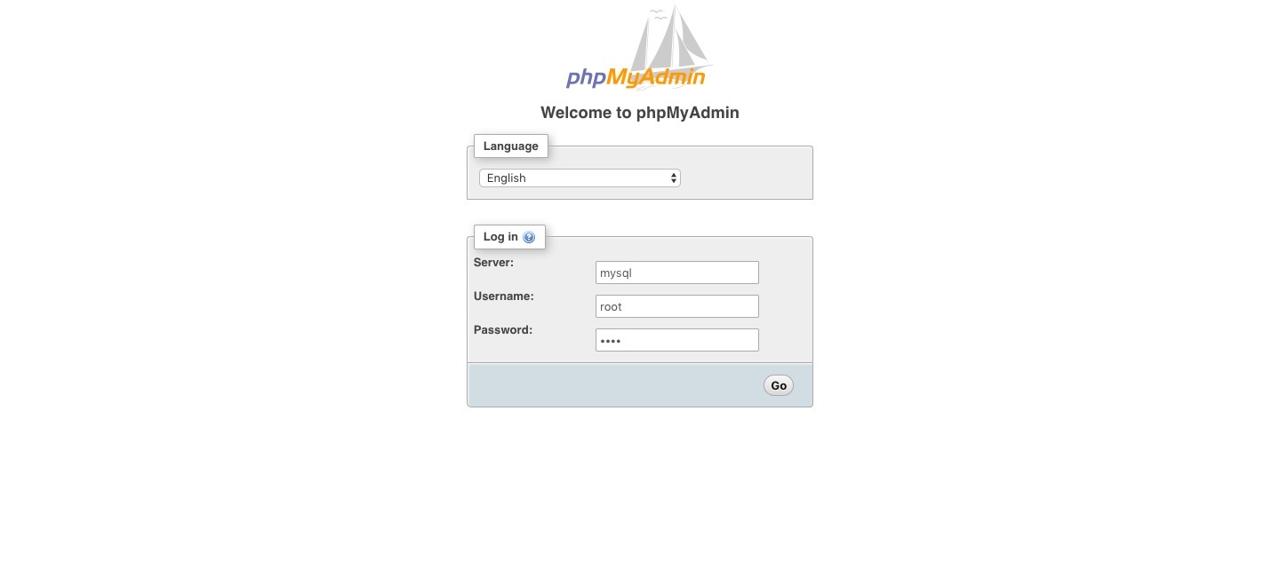
if you didn’t configure anything, you can access by below information.
server: mysql
username: root
password: root
you can see below screen after login.
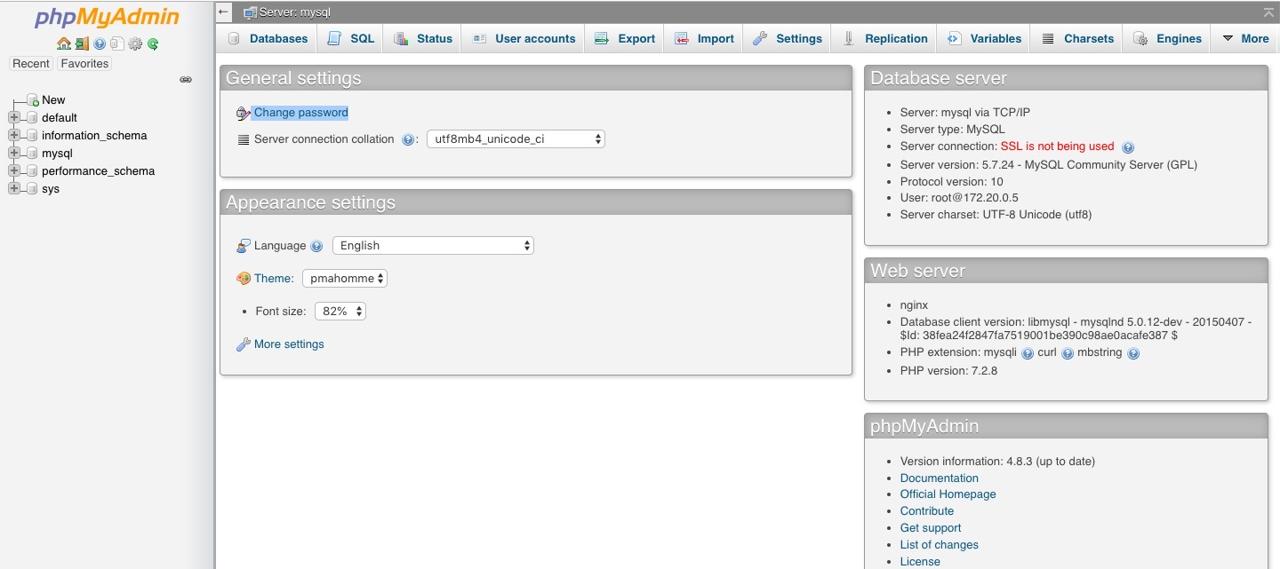
click Change password on the middle of the screen and change password.
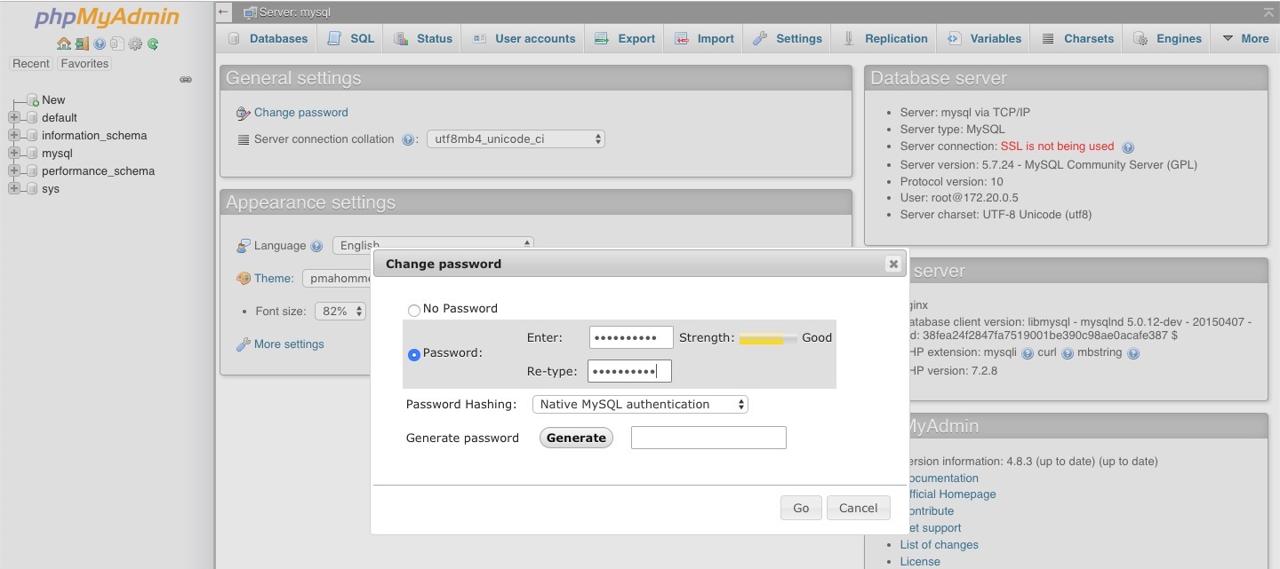
click Database menu on the top of the screen and create database for Laravel.
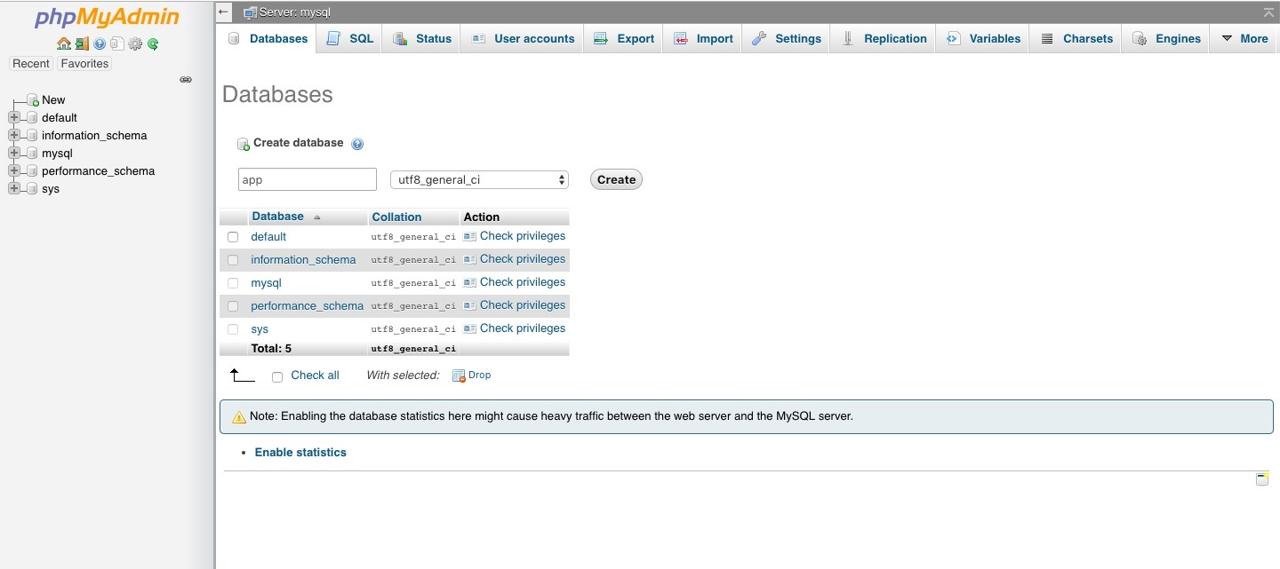
configure Laravel DB
we need to connect Laravel project to Database we’ve made above using phpmyadmin. you can see below when you open Laravel environment file .env.
...
DB_CONNECTION=mysql
DB_HOST=127.0.0.1
DB_PORT=3306
DB_DATABASE=homestead
DB_USERNAME=homestead
DB_PASSWORD=secret
...
modify this parts like below. insert what you’ve set up to settings DB_DATABASE and DB_PASSWORD.
...
DB_CONNECTION=mysql
DB_HOST=mysql
DB_PORT=3306
DB_DATABASE=app
DB_USERNAME=root
DB_PASSWORD=*******
...
if you do so, try to create User Table that Laravel basically provides.
# vagrant ssh
# sudo docker exec -it laradock_workspace_1 bash
php artisan migrate
if you don’t use User Table that Laravel basically provides, remove it by Laravel command below.
php artisan migrate:rollback
completed
we’ve made Laravel development environment using vagrant, Ansible and Laradock. also, we’ve seen a little bit how to use Ansible and Docker through creating development environment. if we use Ansible and Docker very well, maybe we can be DevOps.
we will continue to add contents related to building development environment, Docker and Ansible to this dev environment category. also, we will add contents about Laravel development to Laravel, so please see it.
you can see Laravel development environment created until now at below repository.
reference
Was my blog helpful? Please leave a comment at the bottom. it will be a great help to me!
App promotion
Deku.Deku created the applications with Flutter.If you have interested, please try to download them for free.




